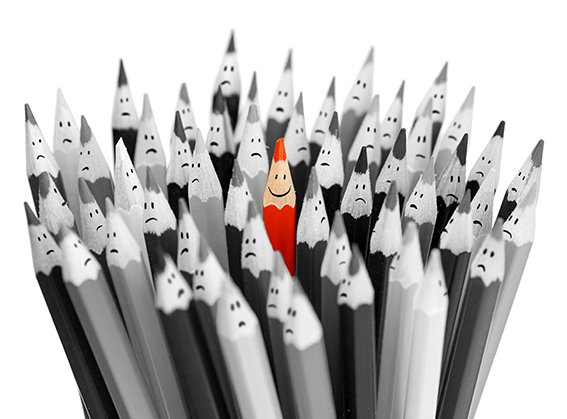
As service providers, we go to work each day and think about the customers and colleagues we serve. We listen, ask questions, and try to understand. Then we take action to answer questions, solve problems, and satisfy needs.
When we succeed the result is a satisfied customer, which can be satisfying for a service provider, too. A customer’s smile makes you feel better. A colleague’s appreciation feels good, too. You might even earn a compliment in person or online – a win-win for both parties. It’s a two-way street: your positive attitude and action comes back to you.
But what about when customers and colleagues are in bad moods, impatient or angry, or even hurling accusations? When that happens you need to work harder. You have shift their mood and solve their problems, put a smile back on their face and answer their questions.
This is more challenging, but can also be more satisfying to achieve. Why? Because the good feelings you create will keep on going. Because the next person they meet won’t bear the brunt of a bad mood. Your positive service action becomes a chain reaction.
For example: a customer calls you in an angry mood and lets you know how frustrated they are with a problem. Before you tackle the problem, you take time to acknowledge their feelings, listen to all they have to say, and show genuine empathy for their situation. After your patience solves the mood problem, then you go to work on their other problems. Your customer leaves with both problems solved, and the next person your customer meets feels the difference.
For example, a colleague comes to you in a huff and in a hurry. Instead than asking them to calm down, you speed up and say “I can see this really matters to you. Let me do everything I can to get this done quickly.” Your colleague sees you working top-speed and their anxiety settles down, and the next person your colleague serves feels the difference.
What if everyone embraced this point of view? What if our measure of success was not just doing our job and getting things done, but working right through the person we are serving now to touch the very next person they meet?
Surely this is a bigger task than is written in your job description. And it’s not likely to be captured in your KPIs or your bonus plan. Then, if it’s not mandatory or measured, why put in this extra effort? Why should you care about the next person your customer or colleague sees, or says hello to, or serves? The answer to this question is simple: at some point, the next person down the line is YOU.
So the next time you serve someone who is already in a good mood, just keep the good energy flowing. And when someone shows up in a bad mood, step up with your service to shift the mood and solve the problem. Be the person who takes an action that starts a chain reaction.



